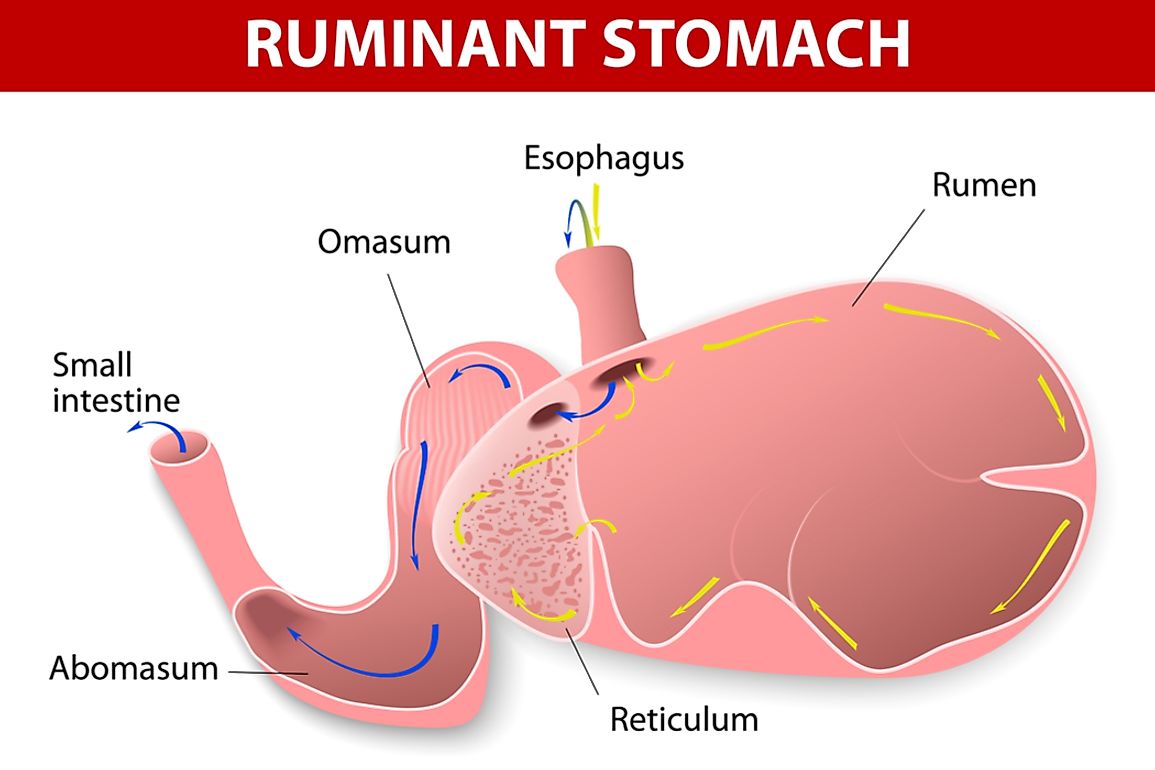Which Animals Have Four Stomachs?

Herbivorous mammals strictly feed on vegetation, and form the group of herbivores, which has the ability of foraging and later regurgitating and chewing the food. These animals are known as ruminants. Ruminants are native to all the continents of the world except Antarctica and are predominantly found in Africa and Eurasia. There are an estimated 75 million wild ruminants in the world, and about 3.5 billion domesticated ruminants. Goats, sheep, and cattle make up a combined 95% of all domesticated ruminants in the world. Due to their adaptability, ruminants are found in all types of habitats in the world, ranging from the freezing tundra in Siberia to the grasslands of the Serengeti.
Characteristics
The main characteristic among ruminants is rumination or the chewing of regurgitated food. To achieve this ability, the digestive tract of ruminants is composed of four stomachs (also known as stomach compartments). The teeth of all ruminants continuously grow throughout their lives. The purpose of constant growth of teeth is to counter the abrasion effect the forage they feed on have on their teeth. The dental formula of many ruminants lack upper incisors and have a dental pad instead. Another common characteristic observed on ruminants is their high production of saliva, particularly during grazing. Cows produce as much as 40 gallons of saliva each day. The saliva is of great significance in ruminants as it acts as a buffering agent during rumen fermentation and to increase the fluidity of the rumen.
The Four Stomach Compartments
The four stomachs seen in all ruminants are the rumen, the reticulum, the omasum, and the abomasum arranged in the sequence that food follows after swallowing. The rumen is the largest of the stomach compartments and is where microbial fermentation takes place. The rumen is laden with microbes which aid in breaking down the cellulose found in their herbivorous diet. Different species of bacteria, fungi, and protozoa make up the microbes that exist in the rumen. The next compartment is the reticulum where the partially digested curd goes before being regurgitated for rumination. Then the animal swallows the chewed curd which goes to the next compartment, the omasum where fatty acids are absorbed. The last compartment is the abomasum which is the equivalent of the normal stomach found in other non-ruminant mammals. In this stomach compartment, different enzymes and acids are released to aid in digestion. Any microbes in the digesta from the rumen and reticulum are also digested in the abomasums and form part of the diet. After leaving the abomasum, the digesta moves to the small intestines and later to the large intestines of the ruminant where further digestion takes place.
Ruminants and Global Warming
Recent studies have established an interesting finding; ruminants are a cause of global warming. One of the byproducts of the digestion among ruminants is methane gas which the animals release into the atmosphere. The gas is a greenhouse gas that has more profound effects on global warming than carbon dioxide. Some sources state that as much as 20% of the global methane production is linked to ruminants. Domestic ruminants are pointed out as the leading producers of the harmful gas since they outnumber wild ruminants 47 to 1. Therefore, domestic ruminants have been directly linked to global warming.











